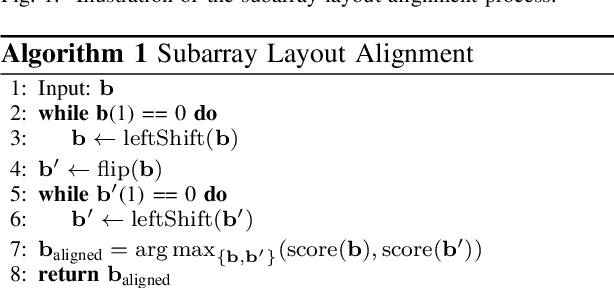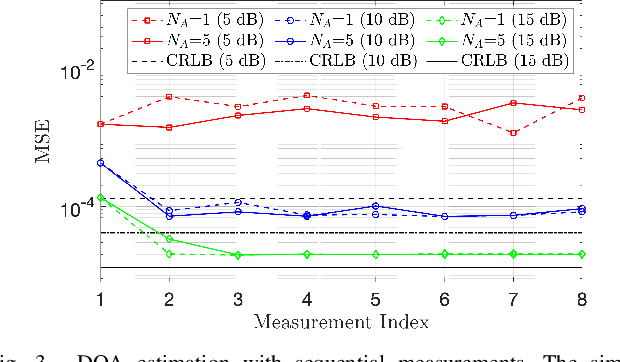Mohammed E. Eltayeb
Compressive Beam Alignment for Indoor Millimeter-Wave Systems
Jun 12, 2024Abstract:The dynamic nature of indoor environments poses unique challenges for next-generation millimeter-wave (mmwave) connectivity. These challenges arise from blockages due to mobile obstacles, mm-wave signal scattering caused by indoor surfaces, and imperfections in phased antenna arrays. Consequently, traditional compressed sensing (CS) techniques for beam alignment become ineffective in practice under such settings. This paper proposes a novel beam alignment technique suited for mm-wave systems operating in indoor environments. The proposed technique exploits the energy compaction property of the discrete cosine transform to compressively sense and identify the strongest cluster locations in the transform domain for robust beamforming. Experimental results at 60 GHz demonstrate successful beam alignment with limited measurements even in the presence of partial blockages during the beam training phase.
Antenna Selection in Switch-Based MIMO Arrays via DOA threshold region Approximation
May 22, 2022



Abstract:Direction-of-arrival (DOA) information is vital for multiple-input-multiple-output (MIMO) systems to complete localization and beamforming tasks. Switched antenna arrays have recently emerged as an effective solution to reduce the cost and power consumption of MIMO systems. Switch-based array architectures connect a limited number of radio frequency chains to a subset of the antenna elements forming a subarray. This paper addresses the problem of antenna selection to optimize DOA estimation performance. We first perform a subarray layout alignment process to remove subarrays with identical beampatterns and create a unique subarray set. By using this set, and based on a DOA threshold region performance approximation, we propose two antenna selection algorithms; a greedy algorithm and a deep-learning-based algorithm. The performance of the proposed algorithms is evaluated numerically. The results show a significant performance improvement over selected benchmark approaches in terms of DOA estimation in the threshold region and computational complexity.
 Add to Chrome
Add to Chrome Add to Firefox
Add to Firefox Add to Edge
Add to Edge